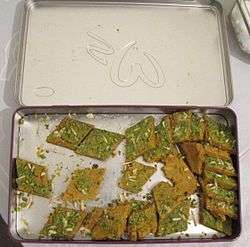Please tell us which country and city you'd like to see the weather in.

Sohan Qadri
Sohan Qadri (born November 2, 1932, in Punjab, India - March 2, 2011, in Toronto, Canada) is a yogi, poet and a painter from India who has lived in Copenhagen for the past 30 years. His paintings result from states of deep meditation, and are informed by the colors of India: luminous, dye-infused works on meticulously serrated paper. Over his long career, Qadri has interacted with a wide array of cultural figures including Surrealist painter René Magritte, Nobel laureate Heinrich Böll, and architect Le Corbusier. Böll once said, "Sohan Qadri with his painting liberates the word meditation from its fashionable taste and brings it back to its proper origin." He has had more than 70 exhibitions in the United States, Europe, Asia, and Africa.
Early Years in India
Sohan Qadri was born in the village of Chachoki, in 1932, in British India. Chachoki is near the industrial town of Phagwara in the Kapurthala district of Punjab. He grew up in a wealthy farming family—his mother was Hindu and his father was Sikh. With no electricity, running water, roads or cars, Chachoki was only a few miles from the more cosmopolitan city of Kapurthala, with its many palaces and official buildings in the French Neo-Classical style, which were built by a Francophile maharajah.
Sohan
Sohan is a village and union council of Jhelum District in the Punjab Province of Pakistan. It is part of Jhelum Tehsil, and is located at 33°3'25N 73°26'30E with an altitude of 303 metres (997 feet). Most of the population belong to the Panhwar Sohlan Rajput's.
References
Coordinates: 33°3′25″N 73°26′30″E / 33.05694°N 73.44167°E / 33.05694; 73.44167

Sohan (confectionery)
Sohan is a traditional Persian saffron brittle toffee. Its ingredients consist of wheat sprout, flour, egg yolks, rose water, sugar, butter or vegetable oil, saffron, cardamom and slivers of almond and pistachio.
See also
References

Sohan Halwa
Sohan Halwa (Hindi: सोहन हलवा; Urdu سوہن حلوہ; [ˈsoːɦən ˈɦəlʋaː]) or Multani Sohan Halwa is a traditional dessert in India and Pakistan, which is a variety of dense, sweet confection or halwa and believed to be Persian in origin. In India Ghantewala Halwai is popular for Sohan Halwa since the Mughal era.
It is made by boiling a mixture of water, sugar, milk, and cornflour until it becomes solid. Saffron is used for flavoring. Ghee is used to prevent it from sticking to the pan. Almonds, pistachios and cardamom seeds are added. Unlike most other halwa dishes in South Asia, it is solid.
History
The Hafiz Halwa shop in Multan claims it was invented by Dewan Sawan Mal, the ruler of Multan in 1750.
S. Abdul Khaliq claim that this halwa was introduced in South Asia in the early 16th century when Mughal emperor Humayun (r. 1530–1540, 1555–1556) came back to power in India after being exiled in Persia. He called for the makers of this halwa from Persia and the ancestors of modern-day S.Abdul Khaliq were the official halwa makers for the Mughal rulers for 300 years. S.Abdul Khaliq also have the term, "Shahi Halwa Sohan Merchants" as part of their branding.
Radio Stations - Sohān
SEARCH FOR RADIOS
Podcasts:

